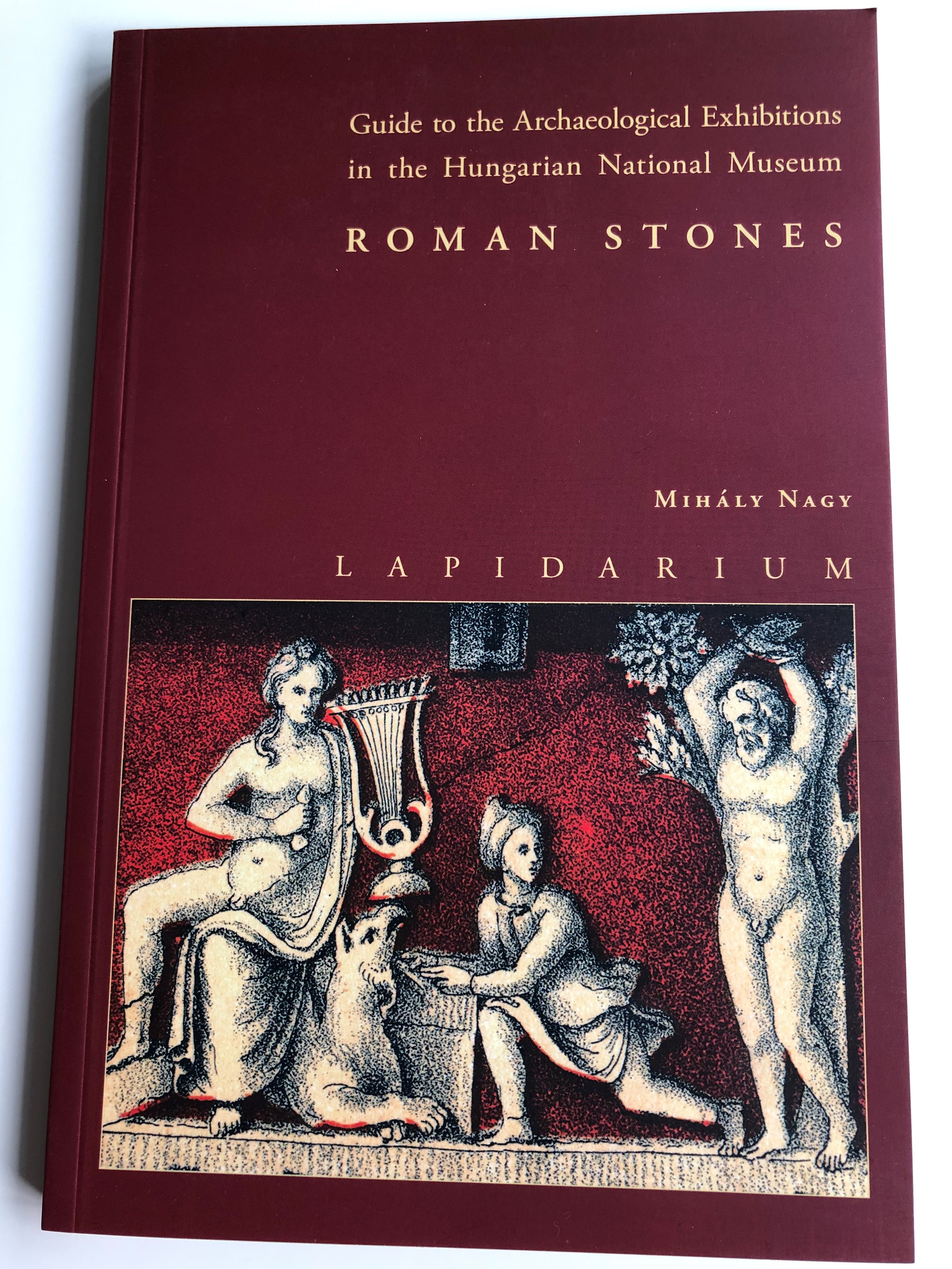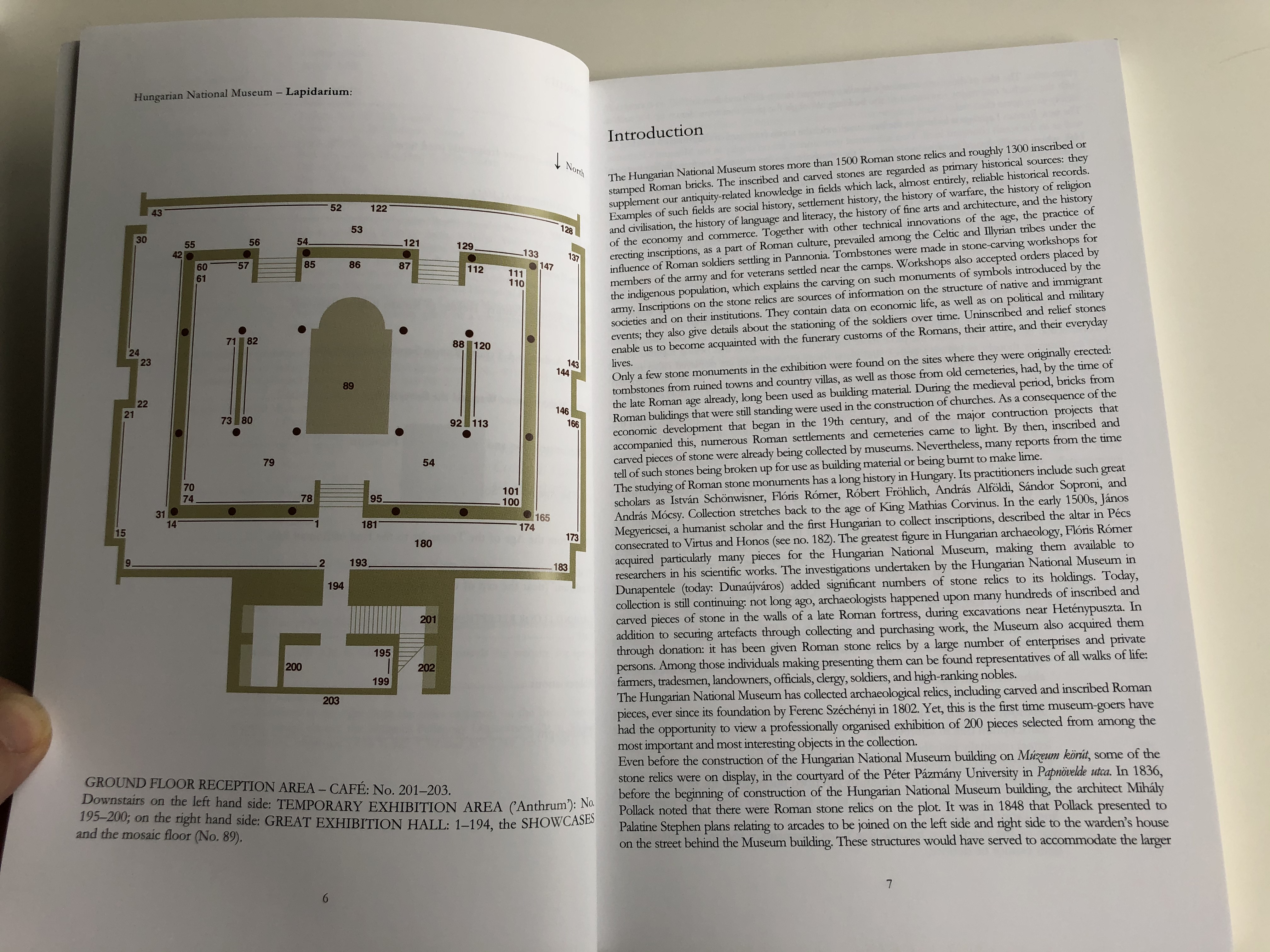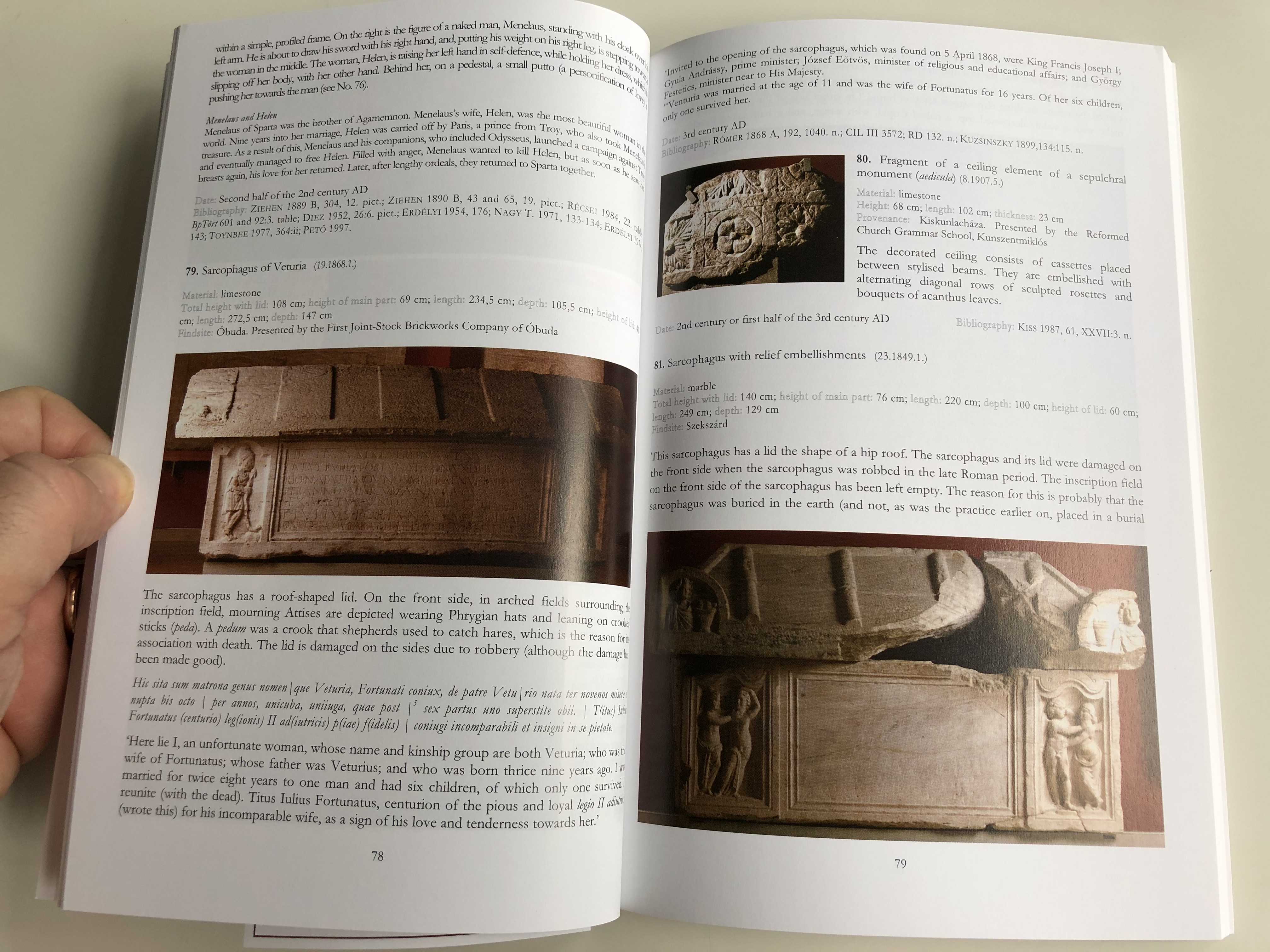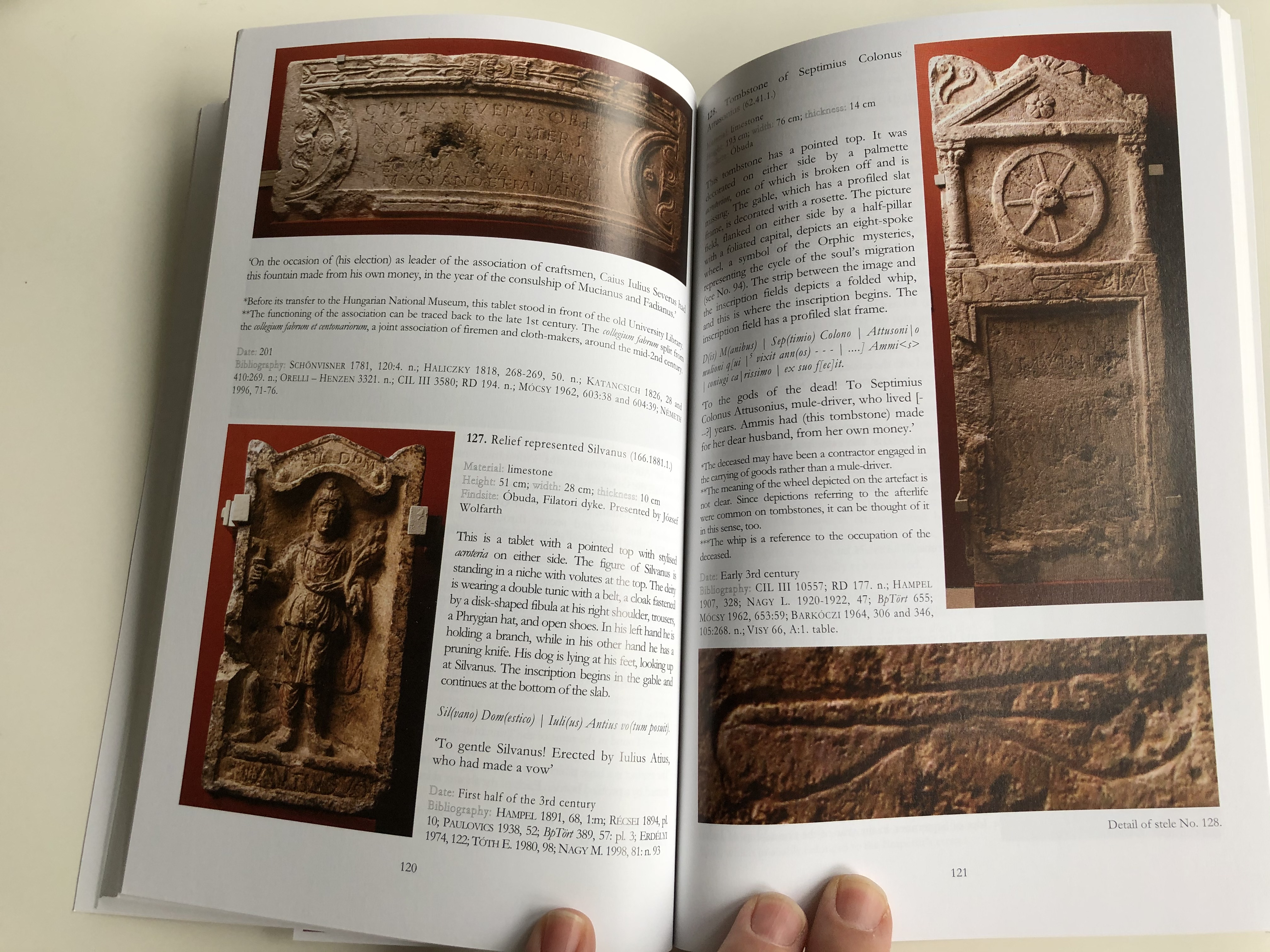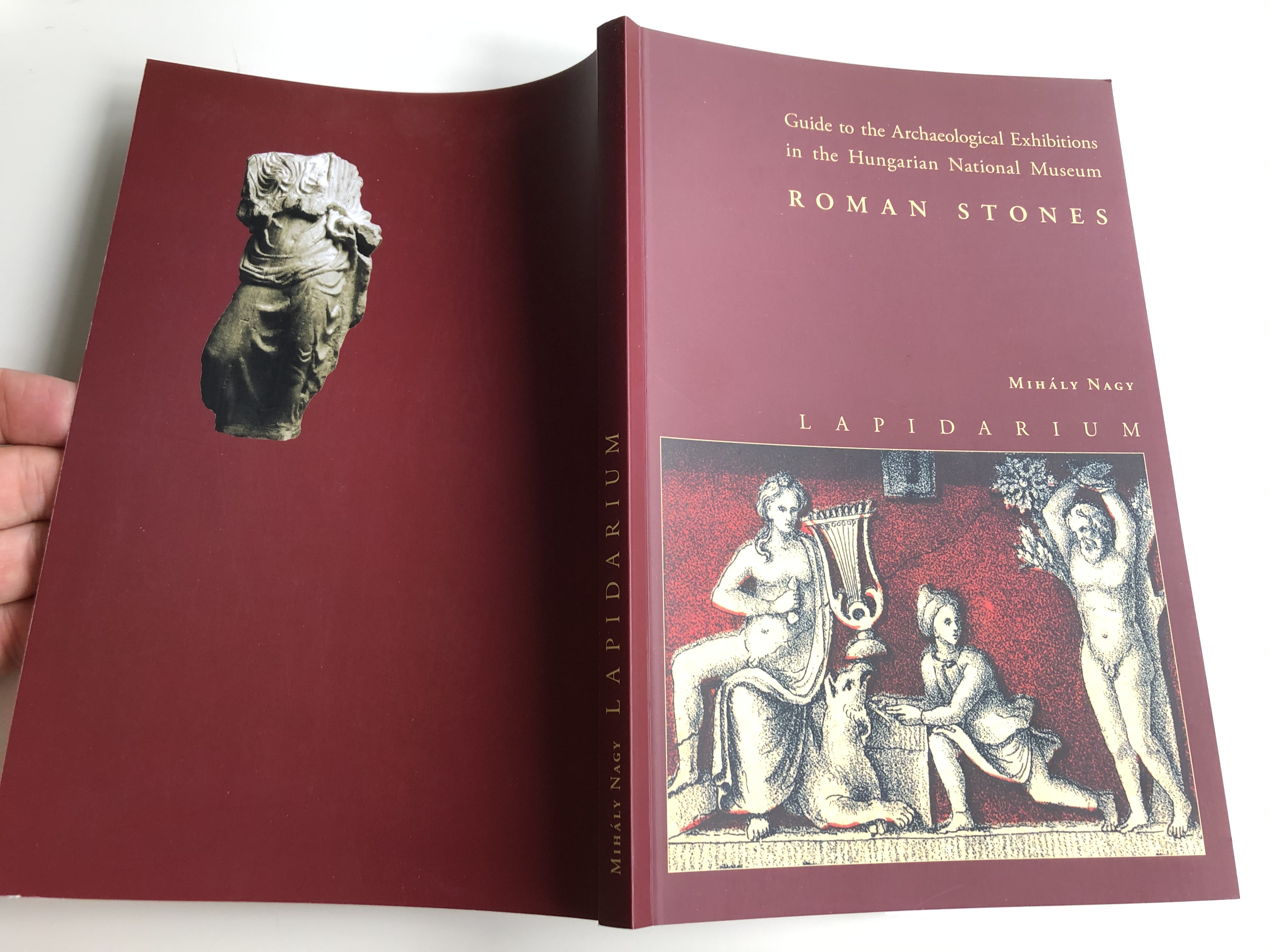Description
Roman stones by Mihály Nagy - Lapidarium / Guide to the Archeological Exhibitions in the Hungarian National Museum / Magyar Nemzeti Múzeum 2012 / Nagy Mihály Lapidárium - A MAGYAR NEMZETI MÚZEUM RÓMAI KŐTÁRA
Paperback 2012
ISBN: 9786155209024 / 978-6155209024
ISBN-10: 6155209022
Pages: 200
Publisher: Magyar Nemzeti Múzeum
Language: English / Angol
A lapidarium is a place where stone (Latin: lapis) monuments and fragments of archaeological interest are exhibited.
They can include stone epigraphs; statues; architectural elements such as columns, cornices, and acroterions; bas reliefs, tombstones; and sarcophagi.
Such collections are often displayed in the outdoor courtyards of archaeology museums and history museums.
English Summary:
These stone relics supplement our historical and art historical knowledge relating to the Roman province of Pannonia, in a period from which few data from other sources have survived.
The Lapidarium – the Hungarian National Museum’s collection of Roman stonework – is housed in an exhibition space under the south courtyard of the Museum’s main building and in a room belonging to the system of cellars that is connected to this space.
The exhibition presents the most characteristic relic types from the collection, which is considered rich in international comparison, too. These are urn-holding stone vessels, tombstones, sarcophagi, elements from sepulchral monuments resembling small temples (aediculae), votive altars dedicated to deities, and inscriptions relating to construction projects.
The stone relics supplement our historical and art historical knowledge concerning the Roman province of Pannonia and are from a time for which we have few data from other sources. Inscriptions on the stone relics yield information about the make-up of the province’s indigenous population, the structure of Roman settler society, and the offices held by the newcomers. They also contain data relating to economic life, places where soldiers were stationed, and the origins of these soldiers. Events in warfare and in politics, too, may be inferred from the inscriptions (the construction of military guard points along the Danube boundary and visits by the Emperor to a number of towns and military bases in the province).
On the basis of the uninscribed stone relics that are worked in relief, visitors can acquaint themselves with Roman funerary customs, the attire of the age, and other elements of the everyday lives of the province’s inhabitants.
Hungarian Summary:
A római kőemlékek tanulmányozása Magyarországon igen nagy múlttal dicsekedhet. A Lapidáriumnak – a Magyar Nemzeti Múzeum római kőtárának – a múzeum főépületének déli udvara alatt és a hozzá kapcsolódó pince-rendszer egyik helyiségében berendezett kiállítótér és az új burkolattal ellátott déli udvar ad otthont. Az itt található több mint másfélezer római kőemlék és körülbelül ezerháromszáz feliratos, illetve bélyeges római téglák világába enged tekintést eme kötet.
